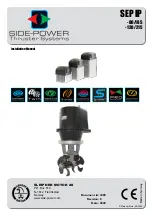
Copyright
©
2010
congatec
AG
QTOPm14
28/80
5.14
CAN Bus
The conga-QA6 supports CAN bus. The CAN controller performs communication in accordance with the BOSCH CAN Protocol Version 2.0B
Active1 (standard format and extended format). The bit rate can be programmed to a maximum of 1Mbit/s, based on the technology used. To
connect the CAN controller module to the CAN bus, it is necessary to add transceiver hardware. A complete description of the CAN controller
registers and functionality is beyond the scope of this user’s guide. Refer to chapter 13.0 of the Intel Platform Controller Hub E20GT datasheet
for additional information about this interface.
5.15
Power Control
PWGIN
PWGIN (pin 26) can be connected to an external power good circuit or it may also be utilized as a manual reset input. In order to use PWGIN
as a manual reset the pin must be grounded through the use of a momentary-contact push-button switch. When external circuitry asserts this
signal, it’s necessary that an open-drain driver drives this signal causing it to be held low for a minimum of 15ms to initiate a reset. Using this
input is optional. Through the use of an internal monitor on the +5V input voltage and/or the internal power supplies, the conga-QA6 module
is capable of generating its own power-on good.
The conga-QA6 provides support for controlling ATX-style power supplies. In order to do this the power supply must provide a constant source
of VCC_5V_SB power. When using an AT power supply (5V only) then the conga-QA6’s pins SUS_S3 and PWRBTN# should be left unconnected.
VCC_5V_SB can also be left unconnected but it is recommended to connect it to the 5V input power rail.
SUS_S3#
The SUS_S3# (pin 18) signal is an active-low output that can be used to turn on the main 5V rail of the power supply. In order to accomplish this
the signal must be inverted with an inverter/transistor that is supplied by standby voltage and is located on the carrier board.
PWRBTN#
When using ATX-style power supplies PWRBTN# (pin 20) is used to connect to a momentary-contact, active-low debounced push-button input
while the other terminal on the push-button must be connected to ground. This signal is internally pulled up to 3V_SB using a 10k resistor.
When PWRBTN# is asserted it indicates that an operator wants to turn the power on or off. The response to this signal from the system may
vary as a result of modifications made in BIOS settings or by system software.
















































